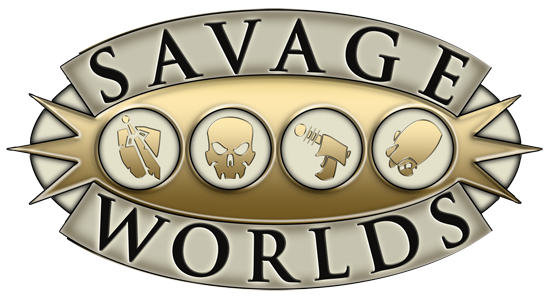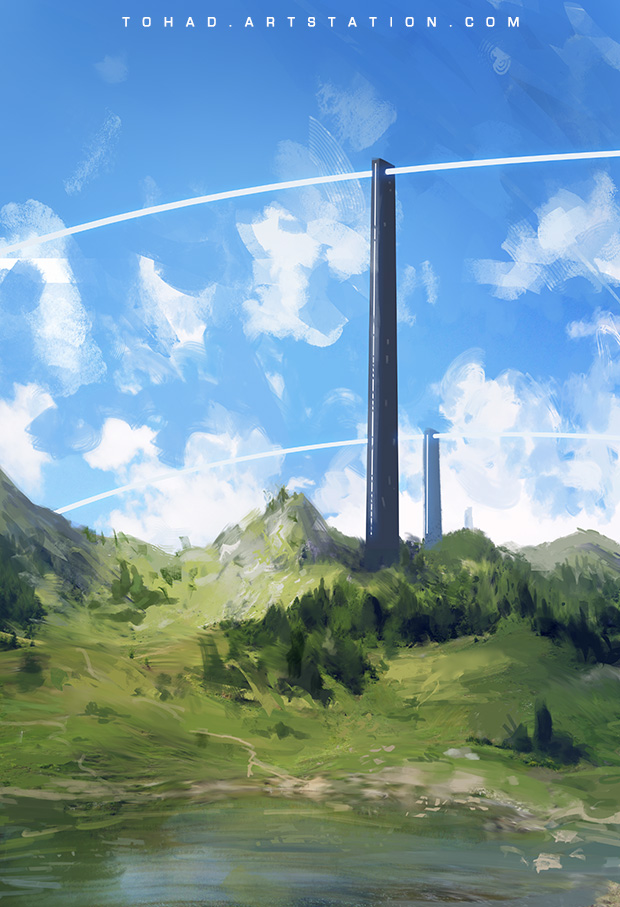This blog references the Quattro con Carnage experiment being run by +James Walls and specifically the fifth and sixth sessions featuring the Savage Worlds RPG segment, and my prior blog posts discussing my thoughts on Basic Fantasy RPG and Dungeon Crawl Classics.

Quattro con Carnage goes fully into the modern realm! The transition to Savage Worlds RPG was a somewhat significant shift in game mechanics. After six sessions of play the characters have really come together and started to feel very much the same despite the change in mechanics at the core. That said, how those mechanics transferred to in game experience turned out to really impact the feel of play.
First off all basic statistics change from a simple system of numbers that give bonuses to a die roll (with d20 being the "base") to a variable die mechanic. Your stats start at d4 and get "bought up" on the dice scale to d6, d8, d10, and at the upper range d12. Given that the standard target number for a roll is 4 for most tasks this makes it possible to very much control your character's destiny in the build phase of character creation. Lommán who's high Wisdom in BFRPG and Personality in DCC ended up with a d10 Spirit, this meant that for most uses of spells and actions in his "core area of expertise" he had a 70% chance of success (actually higher because all player characters also roll a d6 "wild die" when they make any check). This didn't make him infallible (on the contrary, dice rolls once again proved the great equalizer during these two sessions), but it was a clear indication of his area of focus.
The wild die is an extra d6 that is always rolled along with the relevant skill or attribute die. The higher result of the two dice is used as the check result. Only player characters and special NPCs called wild cards get the wild die. If you are facing off with a goblin warband there might be 10 goblins and 1 goblin warlord. The regular goblins don't get a wild die, they are the peons, and stand around making the heroes look awesome. The warlord could be a wild card though, especially if he's important to the story, he'll get to add a wild die to all his rolls.
On top of all of that dice in Savage Worlds explode! No, not literally ... sheesh ... When you roll the highest result on the die it "explodes" (happy?) and you get to roll it again and add the new result to the old. Rolling a d6 you could roll a 6 and then roll again and get a 4 for a total of 10 on your check result. If the die rolls the maximum value on the 2nd roll it will explode again, and again, so long as you continue to roll the maximum you continue to roll again and add to the total value. This is pretty key, and with luck can result in some crazy successes!
This die mechanic also has a gradient effect similar to DCC's. When players roll for a task if they hit their target number they succeed, but if they exceed it by 4 or more they gain a raise. You can gain raised multiple times for each full 4 you exceed the target number, in combat this is especially powerful as it adds to your damage.
An example of dice rolling... Bob has d8 for his attack skill and wants to smack a goblin in the face. The GM tells him what the goblin's dodge or parry (depending on if the attack is ranged or melee respectively) and that becomes the target number for Bob's roll; in this case let's say its a 5. He picks up a d8 (for the relevant combat skill) and a d6 (the wild die) and rolls them. The d8 comes up a 7 which is a hit, but the d6 (the wild die) comes up with a 6. Bob's pretty happy because now he grabs a new d6 and rolls it to add to the first, that die comes up a 6 as well! Things are looking up, and he grabs a third d6 and rolls it getting a 4. His total check result is a 16 which not only beats the target number of 5, but gains him two raises (one at 9+, and a second at 15+). If he'd rolled another 6 he could have tossed yet another die and possibly scored a third raise (or more). His remarkable success grants him bonus damage dice (or some other kind of bonus for non-attack rolls), as his crushing attack slaughters the poor goblin.
Maybe if Bob is lucky the Warlord won't get explosions on his attack...
Unlike DCC and BFRPG Lommán's clerical powers are now based on a pool of power points, he can use them however he wants so long as he can pay for them out of that pool of points. During play the pool didn't impinge on my ability as the player to have Lommán use his powers so in this respect there was little difference between DCC and Savage Worlds. I can see this may not always be the case however, and in some encounters using healing and other abilities might tax his power point pool to depletion.
Class features in DCC also became Hindrances and/or Edges. Where in DCC Lommán had a Disapproval mechanic, in Savage Worlds it becomes a Vow hinderance. It can be leveraged by the GM to provide bennies to the player for role playing that hinderance. Likewise his turn dead class ability became the Holy Warrior edge, which allowed his to repel evil creatures.
Bennies are ... actually I did a whole thing on bennies
here, so I won't repeat myself. Suffice to say that spending a bennie allows you to reroll. You get more for playing your hindrances. It's a straightforward economy that helps the players retain some control over events and shine when they need to.
So how did I like Savage Worlds?
These two sessions were only my 2nd and 3rd times playing Savage Worlds, so I was on relatively even footing with DCC and BFRPG in that regard. I think that the SW system is pretty interesting, and clearly geared toward quick and simple play. The addition of bennies adds an element of player control that I enjoy as well. I had a lot of fun with Savage Worlds, but I don't know that it matched the feel of the prior two game systems. The system seems a lot more forgiving in regards to character wounds and death. It's pretty hard to
kill a Savage Worlds PC by comparison to DCC and BFRPG and from that standpoint it was the most obvious departure from the OSR feel of the prior four sessions.
In the end I think Savage Worlds does a fine job for a fantasy game, but it may be a little too gentle with characters to really mimic that OSR feel where any minute you could drop dead.




